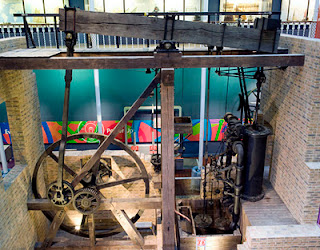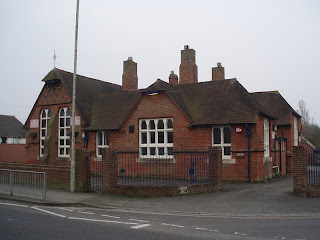When we were growing up, the only family “heritage” of which my father spoke was the line of his great grandmother, the staunch non-conformist Gurney family. There was never any mention of the more recent (and, you might think, more influential) lines of his Castle mother or Reyner grandmother – or indeed of his own male line, the Salters of Hertfordshire. From a purely genealogical point of view this seems like a terrible waste of ancestors!
This post marks the second anniversary of this weekly blog, in which I try to recover and celebrate some of those lost ancestral souls. Since my father took whatever he knew about his non-Gurney forebears to the grave with him, it has not always been a simple matter to snatch even a glimpse of the lives of some of mine. The Reyners are a case in point. They too were liberal non-conformists, a family of Lancashire cotton mill owners for several generations. But I am not in touch with any Reyner cousins (if you’re reading this, Reyner cousins, please write!); and for a long time I knew only the name of my great grandmother, Jane Reyner.
Arthur's sister, Jane Reyner (1850-1938)
my link to the world of Lancashire cotton
This morning however I stumbled across three of her brothers and sisters of whom I had previously never heard. Better still, one of them is described in the sort of detail which no amount of FreeBMD or Ancestry statistical records can convey. I now know I had a great great uncle Arthur, who was
a bachelor of uncertain health, and lived at Thornfield Hall near to Ashton-under-Lyne, with a mother whose strength and stateliness of spirit, coupled with extreme personal fragility, advanced years, and only occasional visibility through the bevelled glass of an ancient brougham, constituted her one of those occasional reproductions of Queen Victoria which appeared during the reign of that monarch, his life being one in which music, travel in Switzerland, Gladstonianism, a perilous habit, for one of his weight and build, of riding to hounds, and the current number of the Nineteenth Century, played a great part.
It sounds as if Arthur was a bit of a playboy. He certainly doesn’t seem to have played any active part in the running of the family mills, and only appears on one British census return throughout his adult life (suggesting that he travelled aborad a lot). He never married, and clearly enjoyed the good life, judging from the weight and build which made riding to hounds such an ill-advised hobby. The Nineteenth Century was a monthly literary magazine which from 1877 to 1972 published debate by leading intellectuals of the day.
Brougham carriage
as occupied by Queen Victoria (left) and Helen Reyner nee Bayley (right)
The description of his mother Helen Reyner, née Bayley (1816-1892) is tremendous! How I wish I had more pictures of this pair of ancestors. Helen was 15 years younger than her late husband Frederick Reyner and outlived him by just that length of time, shutting herself away in Thornfield Hall, the family home, and mourning Frederick (who died in 1877) in perpetuum just as Queen Victoria had been mourning Prince Albert since 1861. Arthur died only ten years after his mother.
These descriptions come from a 1917 article about industrial relations in the northern cotton mills, and it was in this sphere that Arthur did make a mark in public life. He was the president of the Federation of Master Cotton Spinners’ Associations which represented the mill owners, although he seems to have fulfilled the role with mixed results:
In his speeches on the public platform great fluency of thought and expression struggled with anguish against a marked defect of utterance. He had Robert Lowe's inability to perceive the effect he was making on his audience, and his position as leader at once of a Liberal organisation which wanted all sorts of democratic changes, and an Employers' Federation which wanted a reduction of wages, was a vexatious inconsistency, and probably accounted very largely, though it was not suspected at the time, for the recurrent Conservatism of the borough in which he lived.
The tension between his liberal non-conformist inclination to help the working man and his capitalist responsibilities to the family business must have been hard to balance. Around the time of his mother’s death Arthur was one of three employers appointed by the Federation to negotiate a new deal with employees about working practices in the mills. The deal, following a bitter dispute over wage cuts, was thrashed out in a room at the Brooklands Hotel outside Manchester in one all-night session in March 1893 and became known as the Brooklands Agreement. Arthur was the first signatory, but in fact his ill health (perhaps made worse by his mother’s dying days) meant that he was absent from the negotiating table for much of the process.
Sir Charles Macara (1845-1929)
closer of the 1893 Brooklands deal
(and in 1891 creator of Lifeboat Flagdays)
In fact the absence of Arthur and his “defect of utterance” from the final stages made the agreement possible. He had adopted a much harder line over the 5% wage cut and subsequent 20 week strike than his conservative colleague Charles Macara; with Arthur indisposed, Macara was able to take a more flexible approach with the trade union leaders and reach a satisfactory compromise. The Brooklands Agreement introduced a structure of negotiation, conciliation and appeal procedures which remained in place for more than 20 years.
One rather happy side effect of the rancourous 20-week dispute was also described by the same 1917 writer. As the dark satanic mills, and their chimneys, stopped working, pollution levels began to fall:
[The lock-out] lasted long enough to clear the sky, and nearly long enough to clean the earth. Distant objects acquired that startling visibility which in South-east Lancashire usually signifies nothing more serious than " the wakes," and the operatives wandered up and down amid unfamiliar tracts of morning and afternoon, and were, for all their faith and fortitude, in the suspended and deeply disordered state of those who are all dressed up with nowhere to go.




















